Staking tomatoes is not obligatory, however, the operation offers many advantages you would be sorry to miss out on! Indeed, tomato plants easily bend under the weight of their fruit, and installing a stake helps keep them upright, making it easier to harvest ripe tomatoes. Not to mention that the further fruits and leaves are from the soil, the better their chances of avoiding diseases and parasitic attacks.
A wide range of ready-to-use stakes can be found easily in shops. However, despite their simplicity, the purchase price of these accessories is often high, which leads many gardeners to make their own tomato stakes! Here’s how to proceed...
Materials to make tomato stakes
Wood, bamboo, metal, string... When it comes to materials, you have plenty of options for making your tomato stakes.
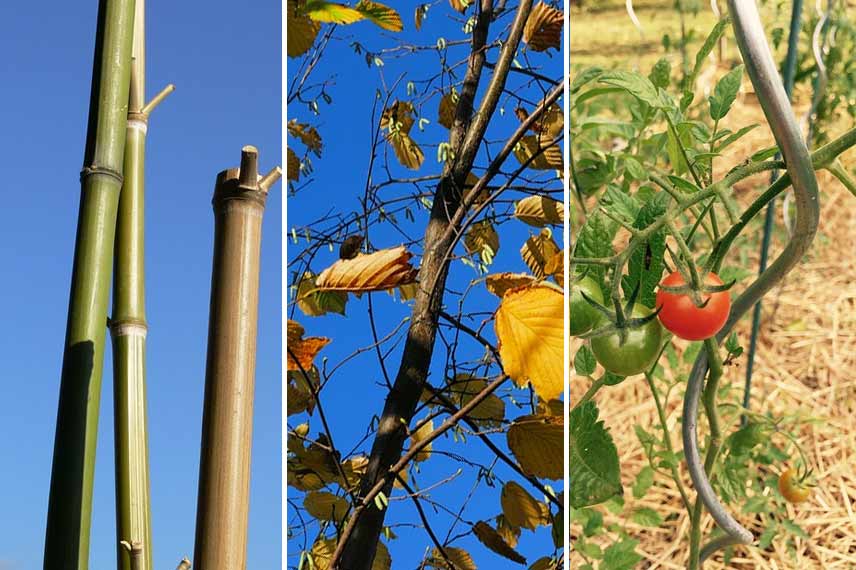
Bamboo, hazel branch, spiralled steel stake.
Making bamboo stakes
The straight canes of bamboo offer both lightness and rigidity. Bamboo therefore proves to be a perfect material for staking your tomato plants. Its smooth surface, however, means ties tend to slip. Better therefore to use bamboo for V-shaped or tipi stakes (details in paragraphs below).
Making wood stakes
If you opt for wood stakes, make sure the wood is strong enough and resistant to water:
- hazel produces branches that are very straight, light and yet very strong;
- rich in tannic acid, chestnut is a wood naturally rot-resistant;
- acacia is known for its durability.
Making metal stakes
Very weather-resistant and sturdy, metal rods make excellent tomato stakes. In commerce, steel and aluminium are used to make spiralled stakes, but to create a metal stake yourself you are more likely to use a reinforcing bar (rebar). Indeed, unless you have skills in metallurgy, you cannot design a spiralled stake yourself.
However, iron rusts on contact with water. Metal materials are therefore not the best choice for making your own tomato stakes.
Making stakes with rope
This type of support is mainly used in greenhouse cultivation. Here, ropes are suspended and hang vertically above the tomato plants, which are then wound around them.
Height to plan for tomato stakes
With a height between 1.50 and 1.80 m, most stakes sold commercially are too short for many tomato varieties. Gardeners are then forced to unnecessarily top their tomato plants.
Therefore, prefer to make stakes 2.50 m tall to accommodate the growth of all your tomato young plants.
Making a single stake for tomatoes
The single stake remains without doubt the most used by gardeners, since it consists quite simply of a rigid, straight stake driven into the soil, onto which the tomato young plant is fixed. In addition, this type of stake is perfectly suited to all fruiting plants that need supporting.
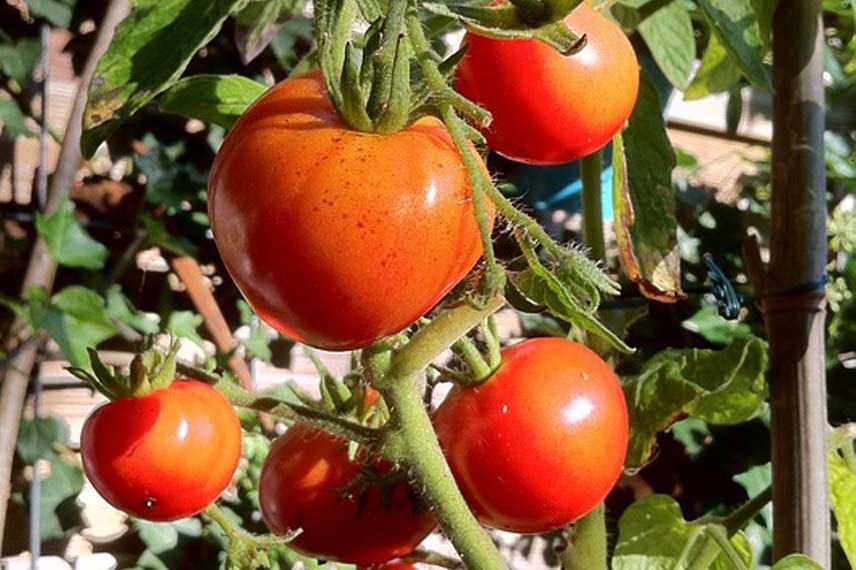
Tomato young plant and simple wooden stake.
Only requirement: choose a stake at least 3 cm in diameter and 2.50 m tall.
For materials, the DIY single stake is mainly made from bamboo canes or long hazel branches.
Making a V-shaped stake for tomatoes
The V-shaped stake is made from single stakes that form a line of inverted Vs (Ʌ).
To make your own V-shaped stake:
- form two opposing rows made of single stakes planted vertically into the soil, spacing them 50 cm apart;
- tilt the stakes and tie them in pairs with cord, string, or wire so as to obtain several inverted Vs;
- then place at the top of the structure a long horizontal stake to connect all the stakes.
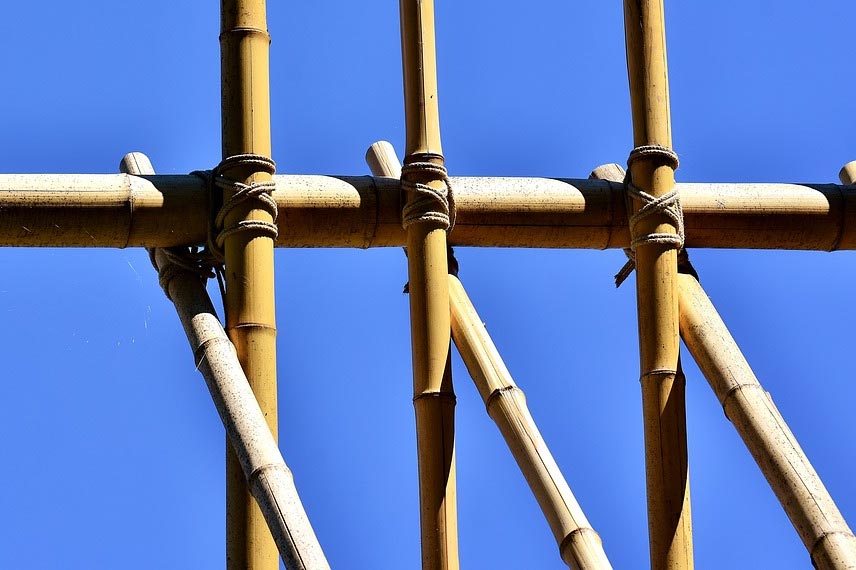
Example of V-shaped stake made with bamboo canes.
Note: the V-shaped stake is particularly suitable for bushy, vigorous tomato varieties. It therefore provides a perfect structure for tomatoes, but also for peas and beans.
Making a tipi stake for tomatoes
As the name suggests, tipi stakes are shaped directly after the conical tents once used by Native Americans.
This type of support structure, particularly sturdy, usually consists of three poles in wood or bamboo:
- plant your stakes into the soil 50 cm apart to form a triangle;
- securely tie them together at the top with cord, string, or wire.
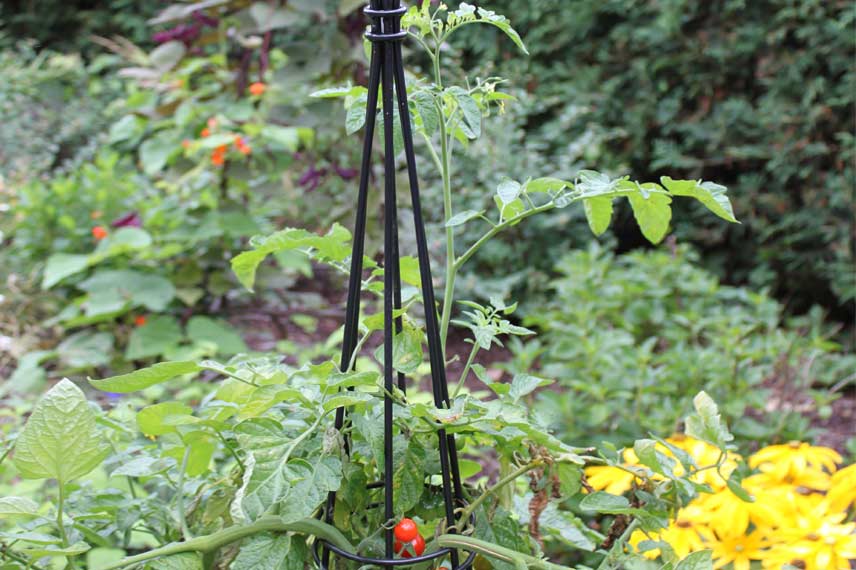
Tomato tipi stake ©Rhonda Fleming Hayes - Flickr
Note: To further strengthen the structure, feel free to add a fourth stake. You will thus obtain a homemade tipi stake particularly suited to windy climates and to tomato varieties with large fruit.
Making a cage support for tomatoes
The cage support is also called a mesh support, and it is particularly intended for greenhouse and open-field cultivation. Indeed, although practical, it takes up a lot of room, which is not ideal in a small vegetable patch.
A cage support for tomatoes should measure at least 1.50 m high by 60 cm wide. For construction, favour use of sheep mesh or reclaimed metal trellis.
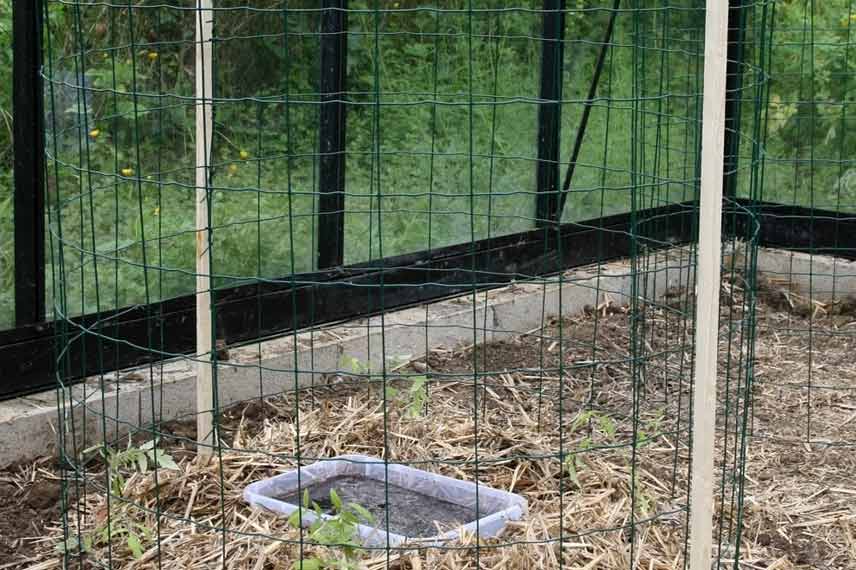
Example of a cage support for tomatoes
Find all details of building a tomato cage in Virginie’s tutorial dedicated to this technique.
The advantage of this type of support is that branches and stems of your tomato plants become entangled in the mesh, which considerably reduces the need for ties.
































Comments